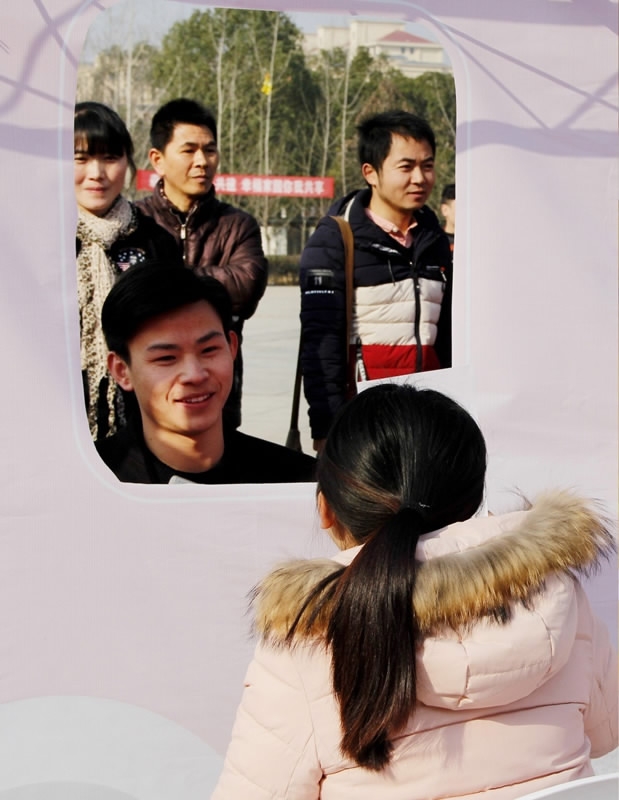In the next decade, the number of men entering the marriage age in China each year will be a million more than women on average. In the next three decades, 30 million eligible Chinese men will not be able to find spouses, China’s People's Daily Overseas Edition reported.
Experts say China is facing serious gender imbalance.

A blind date event in Dongguan, Guangdong province in south China on February 8, 2017. /CFP Photo
Many parents are worried about their sons’ marriage, even more so during holiday seasons when families gather and conversations turn candid. Zhang Jinchun, a villager in Weinan, Shaanxi province, visited his son’s future parents-in-law on Sunday, one day after the Lantern Festival and two days before Valentine's Day. He brought 100,000 yuan (about 15,000 US dollars) and a variety of presents, trying to seal the deal.
“My son is getting 25 this year. I must finalize his engagement with the daughter of Mr. Li, who lives in the north of the county,” Zhang said. “In my village, there are quite a few single guys in their 30s.”
Zhang’s anxiety is shared by many Chinese parents, whose sons struggle to find life partners.

A blind date event for migrant workers returning home in Wannian county, Jiangxi province in south China on January 26, 2017. /CFP Photo
“According to conservative estimations, there will be approximately 30 million men who cannot find wives in the next 30 years in China,” said Zhai Zhenwu, director of the Population Development Studies Center of Renmin University of China and president of China Population Association.
The growing disparity between men and women is the result of China’s imbalanced sex ratio at birth since mid-1980s, which was highlighted in the National Population Development Plan (2016 - 2030) released by the State Council last month.
According to the National Bureau of Statistics, by the end of 2015, there were 704.14 million males and 670.48 million females in mainland China. Males outnumbered females by 33.66 million and the male-female ratio was 105.02 to 100, while the birth ratio was 113.51 to 100.
Separate statistics show that among unmarried people born between 1980 and 1989, the male-female ratio was 136 to 100. The gap is even deeper among those born in the 1970s, with the ratio being 206 to 100, the report said.
The standard birth ratio set by the United Nations is 103-107 to 100.
China’s highly imbalanced birth ratio may lead to a crisis of “leftover men,” said Zhai.

A blind date event for migrant workers returning home in Wannian county, Jiangxi province in south China on January 26, 2017. /CFP Photo
In 2016, China officially abolished its decades-long one-child policy. The move could help gradually lower the birth ratio in a country with a history of entrenched preference for males, noted Wang Guangzhou, a researcher at the Institute of Population and Labor Economics of Chinese Academy of Social Sciences.
Other demographers believe that the fundamental solution to China’s gender imbalance requires further relaxation of childbearing policy and profound improvements in women’s social status, according to the report.









